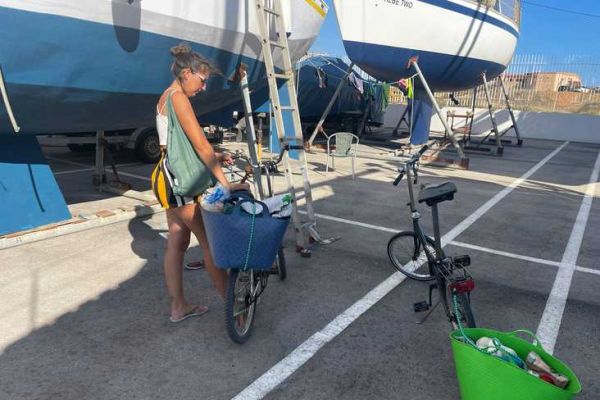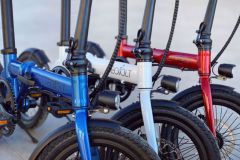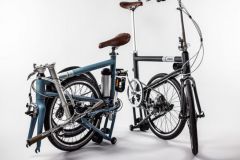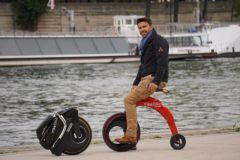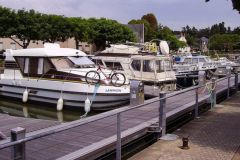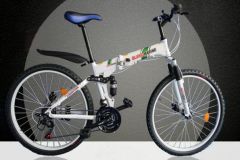Folding bicycles are becoming increasingly popular on board boats. But before taking the plunge, many questions need to be asked about the appropriateness of taking them on board, and how they should be managed. Here we share our experience after 2 years of intensive use!
Where to store bikes on the boat?
In a boat, space is at a premium... When folded up, the bikes are smaller, but still bulky. We decided to make room for them in a locker at the front of the boat. The sewing machine was used to make a nice cover for the bikes. The advantages are considerable: it's easier to carry them around the boat, and avoids scratching and soiling the boat. What's more, it also prevents the chain and cables from getting around, and the crew from cursing whoever chose to take the bikes on board.
We're traveling on a 9-meter boat, and our two bicycles fit on board. It takes a bit of inventiveness and a fair bit of Tetris, but we manage. We've seen sailors hang their bikes on longlines, but if they're steel, expect to have a pile of rust hanging from your longlines in record time. On most sailboats, a folding bike can easily be stowed in a cabin or trunk sec .
Indispensable for enjoying stopovers
Without exaggerating too much, we must have cycled more kilometers than we did on our boat. We even cycled around Porquerolles on dirt roads: not the most suitable bikes, but we were happy with the day. Having bikes on board gives us enormous freedom to explore beyond the marina.
It only takes about 5 minutes to prepare them, which is pretty quick. Then, if we're staying for a few days, we leave them outside the boat with their padlocks, and use them every day. In Valencia Mar, Spain, we were moored at the end of this huge harbor: just to get to the harbor master's office on foot took 20 minutes! With a bike? 5 minutes, and with a smile! We also cycled around Barcelona, which is always more fun than taking the metro.
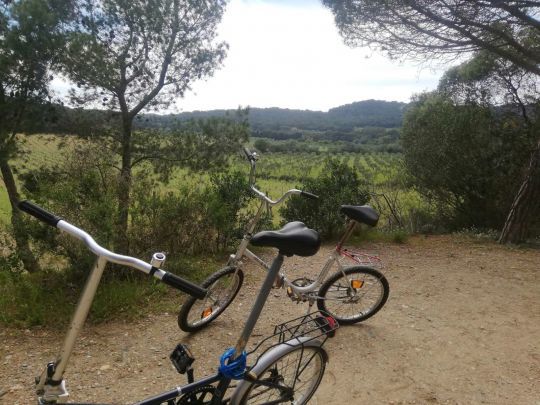
For big bike races: a good rack
To make sure you get the most out of your bike, make sure you have a sturdy luggage rack. We use it all the time: to run errands, get gas, fetch water... We manage to load 20 kilos on the rack without too much trouble. It's very practical and economical. Generally speaking, the marina's supermarkets are the most expensive in town. Who wants to walk 30 minutes to get supplies and come back with 20 kilos of shopping on their back? With a bike and some turnbuckles, provisioning is child's play.
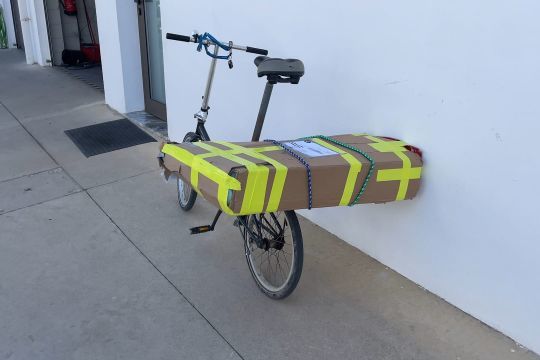
Which bike to buy and at what cost?
Our bikes were bought second-hand for less than 50 euros, and they're perfect in our eyes. Of course, there are many different types of folding bikes: folding speed, aluminum, steel or carbon, wheel size, weight, compactness, portability... In our opinion, a good bike is one that will take you everywhere. A very modern bike with atypical wheel sizes may be a few kilos lighter, but what if you need to change an inner tube? Will you be able to find parts? The right questions provide the right answers. You'll need to find out which type of bike best suits your vessel, depending on your budget, your location and your program.
Electric bikes and other alternatives
There is, of course, the choice of an electric bike, which can be a very good option. In general, we use our bikes when we're in port, and in port we have electricity without counting the cost. We've already met boaters with folding electric bikes. They seemed quite happy. But a bike standard will help you keep in shape, and avoid electrical breakdowns! For the lighter version, you can also opt for a scooter, electric or otherwise. The advantage is weight and compactness, but it's not as efficient as a bike. And if you're an acrobat, you can of course bring along your skateboard, but like the scooter, the small wheels don't allow for the same program.
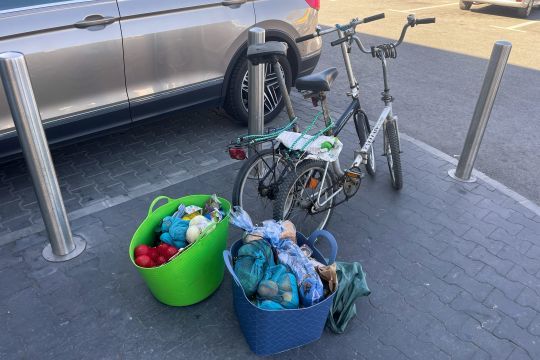
Maintenance and repair kit
You're on a boat, so you've already got the whole toolbox: a set of wrenches for removing the wheels, grease, WD 40 and screwdrivers. All you'll need is a bicycle pump. In 2 years of use, we've only done maintenance work: greasing the chain, changing the tires, patching the inner tubes and, when necessary, changing the inner tube, a little shot of WD 40 when it squeaks, and off you go! The advantage of having a fuel-efficient vehicle is that it's easy to repair.
In conclusion, we don't see how we could have done without our bikes over the last few years. To carry equipment, to enjoy stopovers, to explore, to refuel... they're a bit like our n°2 or even n°1 appendix! We've been to places we wouldn't have explored otherwise, and having bikes on board is a great complement to this cruise. Adaptable, ecological, repairable and offering great freedom: the same characteristics as a sailboat, but on land.

 /
/ 